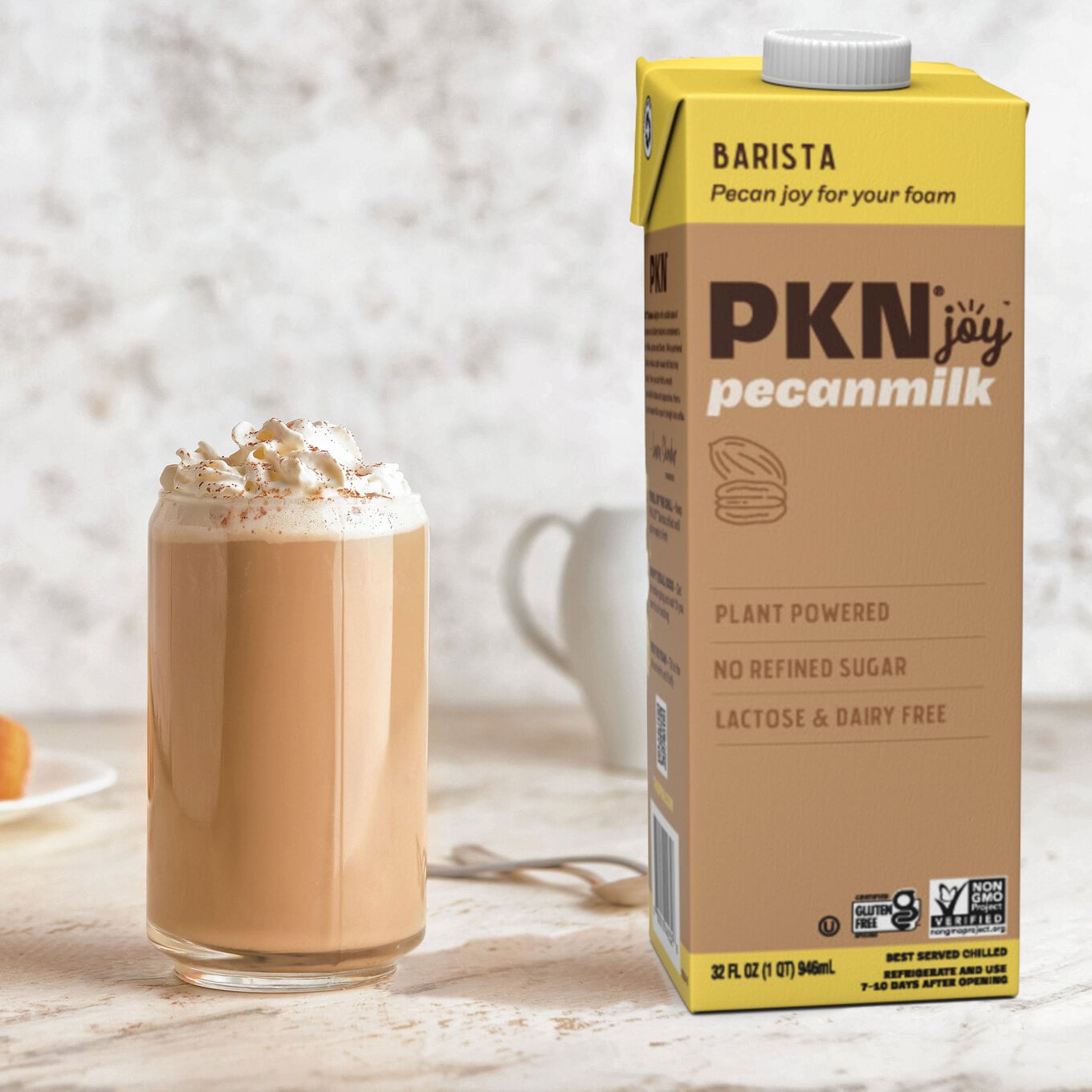Genesis 1:29 reads: “God said, ‘See, I give you every seed-bearing plant that is upon all the Earth, and every tree that has fruit with seed in it. They will be yours for food.’”
This particular Bible passage is fundamental to the Seventh-day Adventists, a Protestant Christian denomination with more than one million members across North America. Most believe that the lord wants them to take care of their bodies with a well-balanced vegetarian diet, as well as regular exercise and other healthy lifestyle habits. And it’s paying off, because, research suggests, this small religious group lives longer than most Americans.
In fact, Seventh-day Adventists can live up to around a decade longer than the rest of the US population. Here’s more about their religion, lifestyle, diets, and the important lessons they have to share with the rest of the world. We’ve also included tips on how to eat just like them, too.
Table of Contents
Who are the Seventh-day Adventists?
The Seventh-day Adventist Church was formally established back in the mid-1800s, and since then, it has grown steadily to include around 1.2 million people, who are predominantly located across the US and Canada.
Loma Linda, CA is particularly famous for its association with the church and is home to around 9,000 Seventh-day Adventists. Most reject evolution and believe that God made heaven, Earth, and all living things in six days. Instead of Sunday, as is the norm in most Christian denominations, Seventh-day Adventists worship on Saturdays.
Pexels
According to Pew Research, the Seventh-day Adventist Church is a particularly racially and ethnically diverse American religious group—around 32 percent of members are Black, while 15 percent are Latinx, and 8 percent are Asian.
The church is not generally accepting of the LGBTQ+ community, however. According to the Human Rights Campaign, it “condemns same-sex practices and relationships.”
Seventh-day Adventist views on the queer community may be out of step with modern thinking (America’s acceptance of same-sex relationships reached its highest point in 2022, according to one Gallup study), but many argue there may still be some lessons that we can learn from the way this religious community lives.
In fact, the Seventh-day Adventist approach to diet and lifestyle has earned Loma Linda the coveted title of “Blue Zone,” a geographic region where people tend to live longer than most.
“As the Adventists demonstrate, the average person’s life expectancy could increase by 10 to 12 years by adopting a Blue Zones lifestyle,” says the official Blue Zones organization.
What are the Blue Zones and how are they related to the Adventist Church?
There are six official Blue Zones in the world, and, as well as Loma Linda, they include Ikaria in Greece; Barbagia, Sardinia in Italy; Okinawa in Japan; Nicoya in Costa Rica; and, as of April 2024, Singapore.
In these areas, identified by the official Blue Zones organization, there are more nonagenarians (people who live over the age of 90) and centenarians (people who live over the age of 100) than elsewhere in the world. In the US, the average life expectancy is around 77, and the leading cause of death is heart disease.
Loma Linda is the only one out of these five Blue Zones that follows the specific teachings of the Seventh-day Adventist Church, but they still have a lot in common with the other places on the list.
 Pexels
Pexels
In fact, the Blue Zones organization, which was founded by National Geographic explorer and author Dan Buettner, notes there are nine key factors that link all of these communities and their long life expectancies together. They are called The Power 9, and they are as follows:
- Move naturally (just relaxed, natural activity, instead of pumping weights)
- Have a purpose
- Downshift (which is, essentially, effective stress management)
- 80-percent rule (eat until your stomach is 80-percent full)
- Plant slant (limit meat significantly, and eat beans for protein)
- Wine at 5 (drink alcohol moderately, or not at all, like the Adventists)
- Belong (most Blue Zone centenarians belong to some sort of faith-based community)
- Loved ones first (take care of your family, and they’ll take care of you)
- Right tribe (have a healthy, committed social circle)
Why does Loma Linda have such a high life expectancy?
The Seventh-day Adventists themselves have also done an extensive amount of research into why, exactly, they live longer than other communities in America. Their findings, which have been published as part of Loma Linda University’s Adventist Health Studies, have been important in understanding the power of nutrition when it comes to tackling chronic disease.
Because Seventh-day Adventists eat very little to no meat, their consumption of plant-based protein sources, including nuts, is high. And so, in the 1970s, one Adventist Health Study began to investigate this dietary habit, and they found an association between the consumption of nuts and a reduced risk of coronary heart disease.
 Sam Williams/Unsplash
Sam Williams/Unsplash
According to the research, eating nuts one to four times a week lowered the risk of a non-fatal heart attack by 74 percent and the risk of fatal coronary heart disease by 73 percent.
Similar to the Blue Zones research, lower body weight, never smoking, and regular exercise were also found to be key factors.
“To make it to age 100, you have to have won the genetic lottery. But most of us have the capacity to make it well into our early 90s and largely without chronic disease,” notes the official Blue Zones organization.
How to follow the Loma Linda Blue Zone Diet
Want to understand more about how to follow the Loma Linda diet and lifestyle? We’ve gathered five top tips below.
 Nigel Msipa/Unsplash
Nigel Msipa/Unsplash
1 Drink more water
Many Americans are not drinking enough water. In fact, research suggests that almost half of the population consumes far below the recommended amount. Seventh-Day Adventists, however, have really mastered the art of hydration, and seem to drink more water than the rest of the population. This, in turn, has a positive health impact. In fact, according to the National Institutes of Health, staying well-hydrated could even reduce the risk of heart failure.
 Piero Istrice/Unsplash
Piero Istrice/Unsplash
2Eat plenty of tomatoes
Tomatoes are delicious, but they can also reduce cancer risk. In fact, research suggests that Seventh-Day Adventist women who eat tomatoes three to four times a week reduced their chance of developing ovarian cancer by 70 percent compared with those who ate them less often. Loma Linda research has also linked regular consumption of cooked tomatoes with a lower risk of prostate cancer in men. This is because tomatoes are high in lycopene, a powerful antioxidant that helps to protect cells from free radical damage.

3 Prioritize beans
Most people in all of the Blue Zones eat a heck of a lot of beans, and the Seventh-Day Adventists are no different. They’re good for our health for many reasons—they’re high in fiber and protein, for example, and they’re rich in vitamins, minerals, and antioxidants. “The long-lived populations in these blue zones eat at least four times as many beans as we do, on average,” says Buettner. “One five-country study, financed by the WHO, found that eating 20 grams of beans daily reduced a person’s risk of dying in any given year by about 8 percent.”
 Adobe
Adobe
4 Load up on greens
According to the CDC, only 10 percent of Americans are eating enough vegetables. But they’re packed with goodness, especially when they’re leafy and green. Green vegetables are high in essential vitamins such as vitamin A, vitamin C, vitamin K, and several B vitamins. They’re also a good source of dietary fiber, and rich in antioxidants, too.
 Getty
Getty
5 Snack on nuts
We said it before and we’ll say it again: nuts are a big deal in Loma Linda, and they are packed with health benefits. In fact, research suggests that this frequent nut consumption, combined with an overall vegetarian diet, is one key contributing factor to a longer life expectancy for Seventh-day Adventists.






